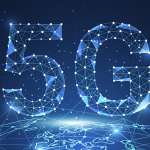Cybersecurity Challenges in the Age of IoT
In an era defined by the rapid proliferation of technology, the Internet of Things (IoT) has emerged as a groundbreaking concept, revolutionizing the way we interact with the world around us. IoT devices, which include everything from smart thermostats and wearables to industrial sensors and autonomous vehicles, have woven a complex web of connectivity that offers unprecedented convenience and efficiency. However, this interconnectivity also comes with a host of cybersecurity challenges that demand attention and innovative solutions.
The IoT Revolution
The Internet of Things is a network of physical objects embedded with sensors, software, and other technologies, enabling these objects to collect and exchange data. This connectivity opens the door to an array of possibilities, from smart cities and automated industrial processes to enhanced healthcare and smart homes. But with this immense potential also comes an array of cybersecurity challenges that threaten the security and privacy of both individuals and organizations.
Vulnerabilities in IoT Devices
IoT devices are characterized by their diversity, with different manufacturers, operating systems, and communication protocols. This heterogeneity creates an extensive attack surface for cybercriminals. Some common vulnerabilities include:
- Inadequate Security Measures: Many IoT devices are designed with limited processing power and memory, making it challenging to implement robust security features. Inexpensive devices, in particular, may lack essential security measures.
- Outdated Firmware and Software: Manufacturers may not provide regular updates for IoT devices, leaving them susceptible to known vulnerabilities. Users often neglect or are unaware of the importance of updating their IoT devices.
- Weak Authentication and Authorization: Some IoT devices employ weak or default passwords, making them easy targets for brute-force attacks. Insufficient authorization mechanisms can also lead to unauthorized access.
- Lack of Encryption: Inadequate data encryption can expose sensitive information during transmission, making it vulnerable to interception.
Privacy Concerns
The data collected by IoT devices can be highly personal and sensitive. When not properly protected, this data can be exploited for malicious purposes. Privacy challenges in the IoT age include:
- Data Breaches: Unauthorized access to IoT devices can lead to data breaches. Personal information, such as home security footage or health monitoring data, may be exposed.
- Profiling and Tracking: The data generated by IoT devices can be used to create detailed user profiles, enabling advertisers and other entities to track and target individuals.
- User Consent: Many users are unaware of the extent to which their data is collected and may not provide informed consent for its use. This raises ethical and legal issues.
Mitigating IoT Cybersecurity Challenges
Addressing the cybersecurity challenges posed by IoT requires a multi-faceted approach:
- Education and Awareness: Users and organizations must be educated about the potential risks and best practices for securing IoT devices. Regular updates, strong passwords, and responsible data usage are key components.
- Manufacturers’ Responsibility: IoT manufacturers must prioritize security in device design, including regular security updates and patches. Regulatory bodies can play a role in setting minimum security standards.
- Network Security: Robust network security is essential. Employing firewalls, intrusion detection systems, and network segmentation can help protect IoT devices.
- Data Encryption: End-to-end encryption should be implemented to secure data in transit, ensuring that sensitive information remains confidential.
- Privacy Regulations: Governments and regulatory bodies can enact and enforce privacy regulations that govern the collection and use of data from IoT devices.
In conclusion, the Internet of Things is reshaping the way we interact with technology and the world. While it offers incredible opportunities for innovation and efficiency, it also brings a host of cybersecurity challenges. To fully realize the potential of IoT while safeguarding privacy and security, it is crucial that users, manufacturers, and policymakers collaborate to address these challenges head-on. Only through collective efforts can we navigate the complex landscape of IoT securely and responsibly.





